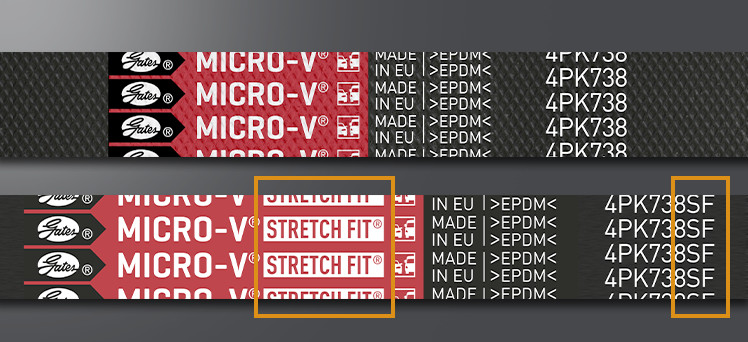Picking the proper belt for the specific vehicle you are working on – or deciding whether a replacement belt is a good match with the pulley – can be quite a hassle. After all, there are many types of belts available. Even one and the same manufacturer usually has belts on offer that look the same but have a different part number. Does this mean that these belts are interchangeable? Read on to learn all about the complex issue of belt compatibility.
Timing belts with the same number of teeth: not interchangeable!
We’ll cut straight to the answer to the question we raised in the introduction: no, these belts are not interchangeable. Let us explain ... On many timing belts, the pitch between the teeth is exactly the same and you may not be able to spot any differences with the naked eye. Still it does matter which timing belt you pick.
There’s a reason they have different product numbers and that’s because they are not 100% the same. There may, for instance, be small variations in tooth profile, tooth angle and depth. In addition, the tensile cord or the fabric covering the teeth may be made from a completely different material. Lastly, the rubber composition, the strength, thickness or temperature resistance may vary from one timing belt to another. In short: you may not be able to see the difference, but it is definitely there. If consolidation would have been possible, your manufacturer would have done it.
Problems that can arise if you do mix them up
If you do interchange timing belts with the same number of teeth, any number of problems may arise, such as premature timing belt failure (possible symptoms include tensile failure, tooth shear, tooth wear, hollowed teeth or land wear). This, in turn, may cause catastrophic engine damage.
How about accessory belts?
The question of belt interchangeability does not arise so much in the context of multi-ribbed belts. However, also in this context choosing the right belt for the specific application is important. Accessory belts are designed to meet the specifications set for particular engines and different belt types are needed to accommodate variations in OE design (e.g. power needed to transmit, wrap angles/pulley diametres, belt tension, an absence of tensioners…). Gates stretch-type belts, called Stretch Fit® belts, e.g. always have a SF at the end of the part number and generally will need a tool for installation. When a 4PK738SF is prescribed, you simply can’t install a 4PK738. Read more about the different types of multi-ribbed belts Gates offers.

While there’s often a significant price difference for timing belts that look exactly alike (which may tempt some mechanics to mix them up), multi-ribbed belts are all in the same price range. There is no point in interchanging them, certainly not based on a small price difference. Always follow the manufacturer’s instructions.